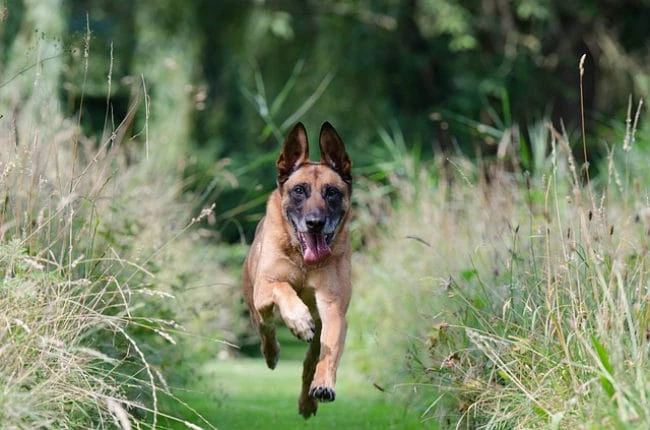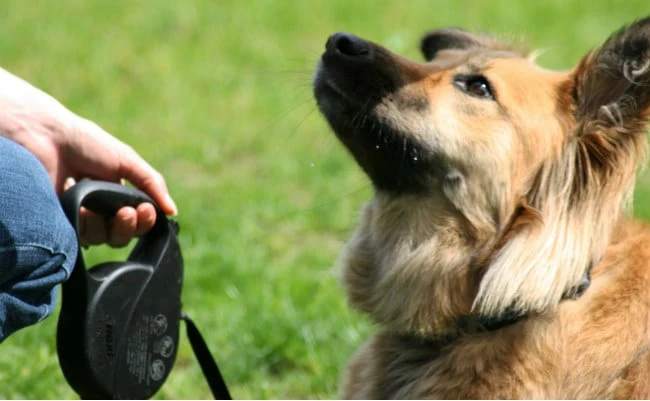How can I leash train my 1 year old Maltese
by Elia
(Sylmar, CA)

Lexxie my little Maltese
I have a 1 year old Maltese. Shes not a bad dog but I cant get her to take calm walks… shes always tugging and pulling.. She will listen when I tell her to sit but I still dont have her full attention.
My Maltese is also way emotional or excited when she sees other dogs I would how to just make her chill out.. She’s over the top sometimes.
Our Response
Hi, I have listed a recent article that I have written and provided a couple of links to useful pages on our site. I hope they help.
The Basics and Vital Tips about Dog Obedience Training.
Did you know that dog obedience training can be beneficial not only to the pet, but also to the pet owner? This is best done by a professional, but if you can’t afford their services, you can stick with the basics and easy routines that you can teach to your pet even if you don’t have any experience in doing this.
The Basics about Dog Obedience Training
First, you have to understand that this is not going to be easy. You can make it less daunting and more enjoyable though if, from the beginning, you already have plans on how to go about the tasks involved. If you don’t have any clues as to what to do, you can buy a book about it or watch online videos about the training process.
Once you have already started with dog obedience training, you have to be consistent. You have to allot a specific time of the day when you will indulge in the activity. You must also prepare treats and other positive reinforcements that you will give to your pet whenever they have done well in following your instructions. You can also buy training tools that can help you execute this properly.
Here are some of the basic activities that are essential in dog obedience training.
1. Housebreaking. If you will allow your dog to stay inside the house, you have to teach them where to “go”, just like how you potty train a child. Once this is done, it will be easier for you and the dog to proceed with the other steps.
2. Crate training. You have to teach your dog to accept and enjoy their stay in the crate. They have to own it because it is their special place in the house.
3. Dog obedience training using a leash. This must be taught to your dogs because they’d have to be on a leash most of the time while you are walking them in the streets. Aside from the fact that most areas have laws that are being implemented in using a leash, this is also used to ensure safety of your pets while they are outdoors.
4. Socialization. You have to expose your pet not only with other dogs, but also to different animals, people and places. This will hone their behavior, people will be more welcoming towards your pet and this will also make your pet happier.
5. Clicker training. This is one form of positive reinforcement that you can easily employ with your dog obedience training.
The Benefits of Dog Obedience Training
This kind of training is best implemented by a professional, but even if you have opted to do this on your own, you will still experience the benefits of the process.
1. Your pet will learn to adapt to the family and other people and animals that it gets exposed to. Their temperament and personality are going to be groomed and dealt with accordingly. The kind of training will vary depending on the age and breed of the dog.
2. Both the pets and owners will be happier. When your pet knows its place in the house and it feels that you really care for them and take the time to train them or hire a pro to do the task, they will feel more fulfilled. As their owner, you will have less problems in dealing with your pet and how they react whenever there are guests in the house. You will be assured that they will behave their best most of the time, whether you are in your home or outside.
3. When dogs are properly trained, you will feel more confident that they won’t suddenly attack just about anyone, especially if you have kids at home. The goal of the training is to make your pet listen and obey you as its owner and not the other way around.
4. You will have greater satisfaction with your pet once it has been trained. You can leave them at home while you go about your daily activities outside without the need to worry that they might be causing a havoc with your things and other fixtures.
Teamwork…
The training is all about teamwork. As you and your pet go through the process, you will be able to bond and get closer. Developing a close connection with the pet is easier to accomplish if you have acquired them as a puppy. It is a different matter though if you have bought or adopted an older dog, especially if it has been maltreated by its previous caretakers. As the training process ensues, you will know more about the dog and they will also do the same with you. They will understand your behavior, what makes you happy and what makes you frustrated.
The training will also allow your pet to know you quite well. Through time, you will feel as if they can already read your mind. The training can also be fun for both the pets and the owners. You can do this along with other family members. You can take this chance for all the members of the family to bond with each other, while bonding with the pet and training it as well.
The Downside of Choosing Not to Train Your Dog
You can opt not to train your pet by allowing them to do whatever they like whenever they please. This could mean less work for you and you don’t have to spend for the services of a professional trainer, but there will be more consequences to this than when you choose to pursue dog obedience training.
First, you won’t have any control on your pet’s behavior. They can launch an attack on just about anyone, even with your family members when you least expect it. You won’t understand their moods. They might be telling you that they are angry or hungry or sad, and you won’t be able to comprehend and respond to it accordingly. As a result, they will get temperamental for not getting the kind of response that they are hoping for.
Please see our page on dog behavioral problems.




